We looked together at the five prompts for the discussion and you came up with some great ideas particularly on the topic of generalizations.
the second part of the lesson was spent in the computer lab typing the data table, conclusion and discussion of results. I booked the computer lab again for Monday so you can finish this work and turn your report in. If you finish before the end of class you can use the class time on research for your project.
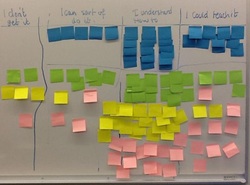
This is how confident you feel about writing conclusions. I think we are in good shape!!!

| 2012-11-30discussion_snd_final_write_up.pdf |
| File Size: | 630 kb |
| File Type: | pdf |
Download File
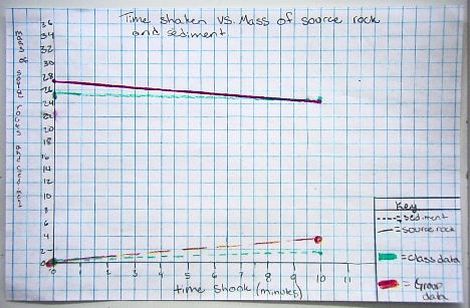
This is the graph we did to show the results of our erosion investigation. This was a complex graph and took most of the class period to complete. Some studnets did get to write the conclusion for the investigation also!

| period_3_data |
| File Size: | 29 kb |
| File Type: | period 3 data |
Download File

| 2012-11-29_investigationgraph_and_conclusion.pdf |
| File Size: | 1506 kb |
| File Type: | pdf |
Download File
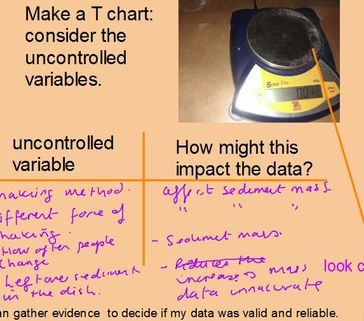
Before we started typing the investigation we spent a few minutes talking about the variables we were not able to control and how this might have impacted our data.

| 2012-11-28_investigation_analysis_and_write_up.pdf |
| File Size: | 1217 kb |
| File Type: | pdf |
Download File
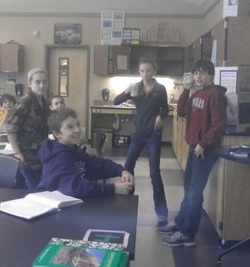
Watching the clock for the time to be up!!!
I think there will be a great discussion about uncontrolled variables!!!!!!!!!!!!!!

| 2012-11-27erosion_investigation_trials.pdf |
| File Size: | 1654 kb |
| File Type: | pdf |
Download File
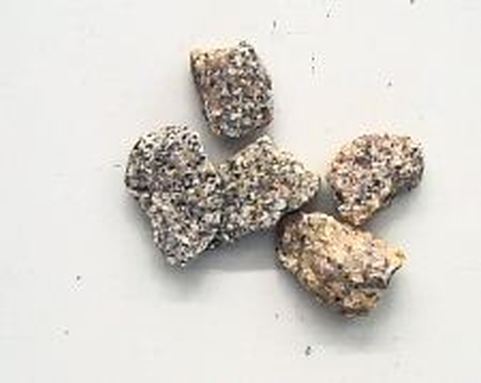
Today the entry task involved you making a summary of what you have learned about rock layers and erosion. Lucas accurately pointed out this this was part of the rock cycle!
Your next task was to begin the pre-lab write up to answer the question;
How does weathering time affect the mass of the source rock and the mass of the sediments produced?

| 2012-11-26_erosion_investigation.pdf |
| File Size: | 2507 kb |
| File Type: | pdf |
Download File

| rock_investigation_procedures.docx |
| File Size: | 14 kb |
| File Type: | docx |
Download File
I have posted some pictures of projects from 2 years ago. You will find them in a new tab under the daily science blog tab.
Use these photos to give you some ideas. remember though that you may not explain how earthquakes and volcanoes are formed. yo may use a volcanoe in the pacific northwest to explain glaciation.
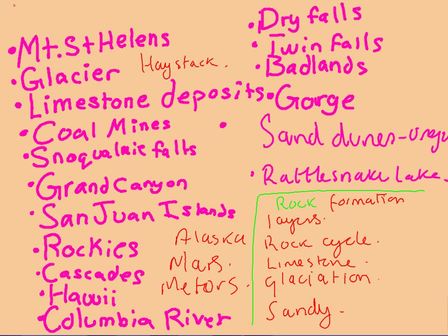
Today and tomorrow you will watch a slide of various landformations around Arizona, Utah, Colorado and New Mexico.
You will annotate your diagrams with notes on how the landformas were created through differential erosion.

| 2012-11-20_differential_erosion_day_2.pdf |
| File Size: | 424 kb |
| File Type: | pdf |
Download File
Today I met with period 1 and 2.
We did a journal check first. This was a big one since we have not completed a check since we started Earth History!
You then were informed of the Earth History project! I hope you have a lot of fun with this. Don't forget big and pretty is not necesarily an A, look at the rubric and the requrements very carefully.
For class time we started a discussion on differential erosion. This would be a great project topic!!

| 2012-11-16-differential_erosion.pdf |
| File Size: | 1002 kb |
| File Type: | pdf |
Download File
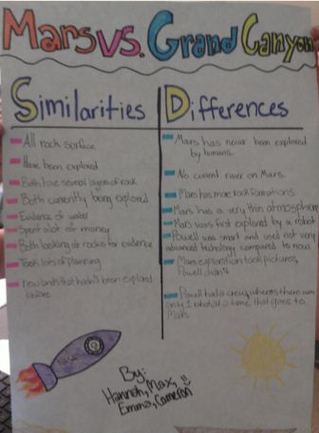
Yesterday and today I was involved in professional develoopment work with SMS and CKMS and so you all were working on analyzing and the information on Mars. many of you were able to present your work to the class. As I was not present to see your presentations I will be looking at your work stored on the H drive. I hear the presentations were really fabulous!

We made our third layer of sedimentary rock today, shale. Shale is formed in slow moving water from the smallest particles of eroded materials, silt and clay. To top off our layer we added a leaf imprint to represent a fossil.
In your journals you started a conceptual model of the layers in the basin.
The eroded materials that make the shale are the smallest particle sizes and as such have the tiniest spaces between the grains of sand.

| 2012-11-13_shale_formation.pdf |
| File Size: | 155 kb |
| File Type: | pdf |
Download File









 RSS Feed
RSS Feed